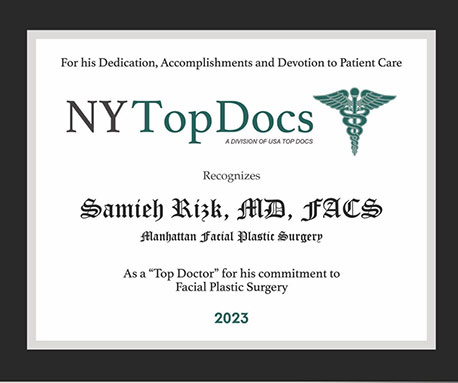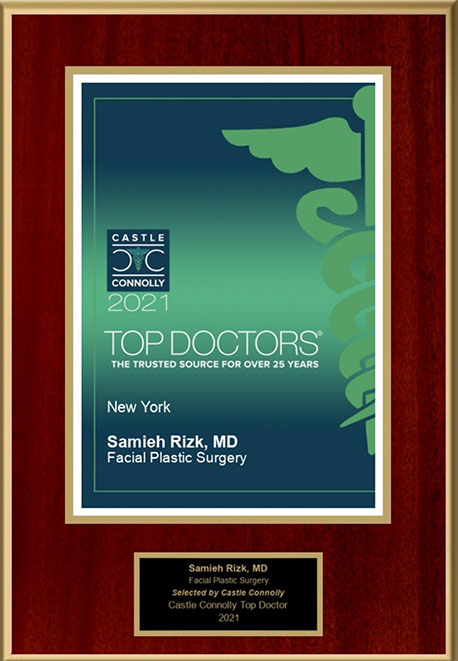Sinus Surgery Symptoms
The sinuses are a series of connected cavities located in the anterior part of the skull. Lined by a soft tissue called mucosa, they consist of four cavities:
- Maxillary sinuses (in the cheekbones)
- Frontal sinuses (in the mid-lower part of the forehead)
- Ethmoid sinuses (between the eyes, at the bridge of the nose)
- Sphenoid sinuses (inside the bones located in back of the nasal cavity)
Experts are uncertain as to what the purpose of the sinuses is; some think that they add humidity to air breathed in and contribute to the sound of the voice.
What Issues Affect the Sinuses?
Many things can lead to inflammation and swelling of the sinuses. Causes include nasal polyps, allergies, facial trauma, respiratory tract infections, infection, nasal polyps (growths in the sinuses) a deviated septum and other issues.
Acute sinusitis refers to sinusitis that lasts less than a couple of months. If swelling persists it is referred to as chronic sinusitis, which can interfere with drainage, cause an accumulation of mucus and make it hard to breathe through the nose. Chronic sinusitis can also lead to swelling near the eyes and other parts of the face, as well as a headache and/or throbbing pain.
Sinus Symptoms
Acute sinusitis and chronic sinusitis share some symptoms, but whereas acute sinusitis is not a serious medical issue and does not last, chronic sinusitis lingers, eventually causing serious health issues. You may have chronic sinusitis if you have noticed two or more of these signs and symptoms:
- Difficulty breathing through the nose
- Nasal obstruction
- Congestion
- Thick yellow or green discharge draining from the nose or into the throat
- Reduced sense of taste and smell
- Swelling, tenderness or pain in the eyes, cheeks, nose or forehead
Additional symptoms include:
- Coughing
- Irritability
- Ear pain
- Aching of upper jaw or in the teeth
- Fatigue
- Sore throat
- Bad breath (halitosis)
- Nausea
Your doctor will examine you to see what is causing your sinus problems, and may order certain tests if necessary. During the exam the doctor will examine not just your sinuses but also your throat, ears and eyes. The doctor will inquire about your symptoms, allergies, medical history, medications you take, whether or not you smoke and other factors that will help determine what the right treatment is. You should compile a list of questions for the doctor as well.
Treating Sinus Symptoms
The treatment for your sinus problems will depend on your symptoms. The goals of treatment are to address the cause of the symptoms, improve drainage, reduce inflammation and eliminate any flare-ups.
Here are some of the most common treatments for sinusitis:
Over-the-counter pain relievers: ibuprofen (e.g., Advil, Motrin IB), acetaminophen (e.g., Tylenol), aspirin. (Do not give aspirin to children/teens 17 years old or younger.)
Decongestants. Usually available over the counter, decongestants are also available in prescription form. They come in the form of tablets, liquid and sprays. Use of decongestants is typically recommended for no longer than a few days.
Saline nasal irrigation. These nasal sprays are used to rinse the nasal passages.
Nasal corticosteroids. These sprays help to prevent and address inflammation.
Oral or injected corticosteroids. Often prescribed to patients with nasal polyps, corticosteroids minimize inflammation stemming from severe sinusitis.
Aspirin desensitization therapy. This type of therapy is for patients with reactions to aspirin that cause sinusitis. It is only available in special medical centers and clinics.
Antibiotics are sometimes necessary if a patient is suffering from a bacterial infection, but in many cases chronic sinusitis stems from other causes that antibiotics cannot treat.
Allergy shots are often recommended for patients with sinusitis caused by allergies. Also referred to as immunotherapy, these shots reduce the body’s response to allergens.
Surgery. In cases where sinusitis continues even after several steps have been taken to address it, endoscopic sinus surgery may be necessary. This procedure involves the use of a thin tube with an attached light called an endoscope. Based on the cause of the blockage, the surgeon may rely on a number of instruments to remove tissue that is causing the obstruction. Alternatively, the sinus opening may be widened to assist with drainage.








